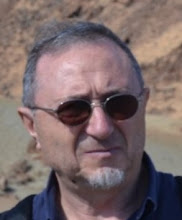"Tourist operators and public decision makers of a certain touristic destination are interested in knowing the contribution of each of the touristist resources (attributes) available and of theirs levels to the success of the destination. That as to do with preferences kept by present or future (potential) consumers (tourists). Having access to that knowledge they can evaluate the consistency of the strategy they are following in terms of profiting from those resources, as well as to take more informed decisions regarding promotion of the touristic destination, according to the set of products and services available.
Briefly, from the results we got from our empirical approach, we have to conclude that resources tourists value the most are (were) Oceanic Beaches and National Parks or Protected Landscapes. Having this in mind, from a promotional point of view, we think coastal municipalities of our study, which do not belong to the Peneda-Gêres National Park, should include the reference to it in their promotion campaigns, as they are located close to it. The same way, those municipalities which are inserted in this National Park, should refer to the coastline in their tourism folders, as the distance to it is never longer than a few dozens of kilometres.
By contrast, considering the same empirical results, given the minor importance conferred to Religious Patrimony and Handicraft by, both, national and foreign tourists, there is, clearly, the need to review the importance (visibility) given to them in the promotion strategies. Anyway, taking the perspective that it will be better to have a touristic destination able to offer to the market an enlarged folder of products/services than a narrow one, it seems to make sense that these resources are taken as complementary ones. As the current promotion strategy does of the Religious Patrimony and Handicraft the visiting cards of Minho-Lima, the results we got call for a deep move regarding this territory future touristic promotion."
Briefly, from the results we got from our empirical approach, we have to conclude that resources tourists value the most are (were) Oceanic Beaches and National Parks or Protected Landscapes. Having this in mind, from a promotional point of view, we think coastal municipalities of our study, which do not belong to the Peneda-Gêres National Park, should include the reference to it in their promotion campaigns, as they are located close to it. The same way, those municipalities which are inserted in this National Park, should refer to the coastline in their tourism folders, as the distance to it is never longer than a few dozens of kilometres.
By contrast, considering the same empirical results, given the minor importance conferred to Religious Patrimony and Handicraft by, both, national and foreign tourists, there is, clearly, the need to review the importance (visibility) given to them in the promotion strategies. Anyway, taking the perspective that it will be better to have a touristic destination able to offer to the market an enlarged folder of products/services than a narrow one, it seems to make sense that these resources are taken as complementary ones. As the current promotion strategy does of the Religious Patrimony and Handicraft the visiting cards of Minho-Lima, the results we got call for a deep move regarding this territory future touristic promotion."
Laurentina Vareiro
J. Cadima Ribeiro
[reprodução da "conclusão" de comunicação intitulada "The use of stated preference and choice models in the analysis of tourists’ preferences: the Minho-Lima sub-region (Portugal) case", a ser apresentada em: 47th Congress of the European Regional Science Association (Joint Congress of ERSA and ASRDLF), Paris, August 29th – September 2nd, 2007].

Sem comentários:
Enviar um comentário